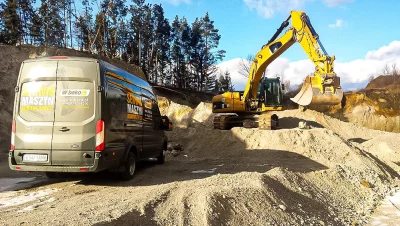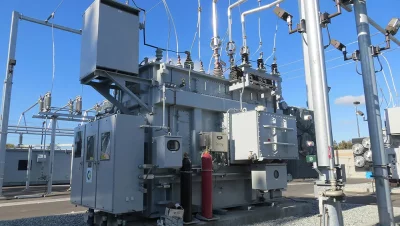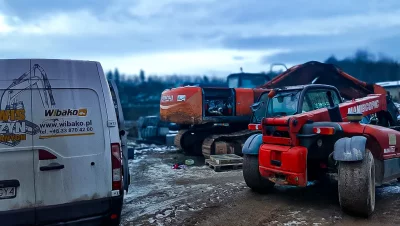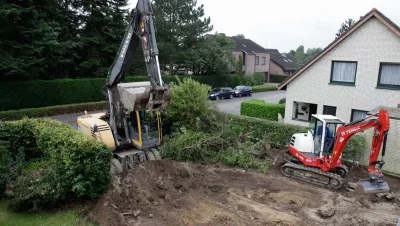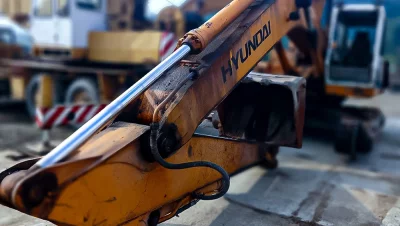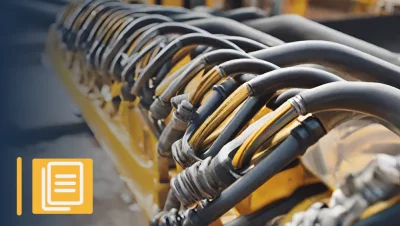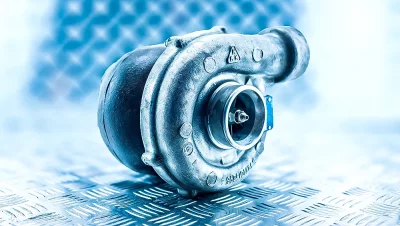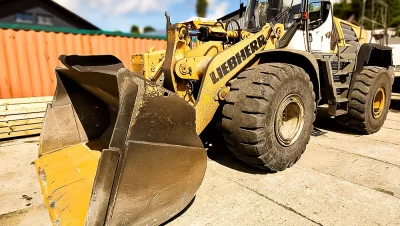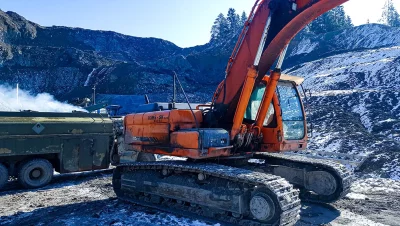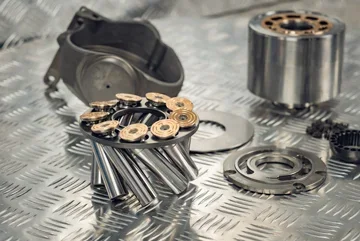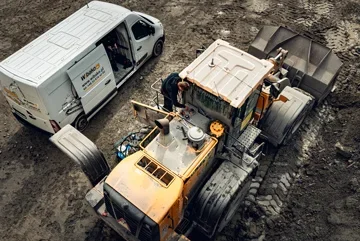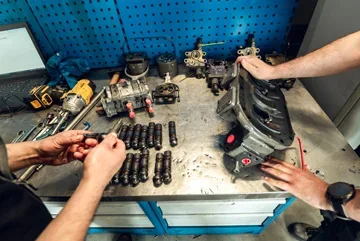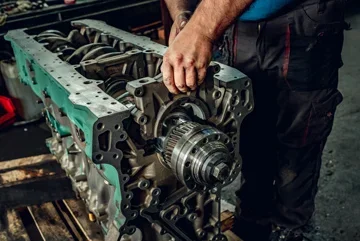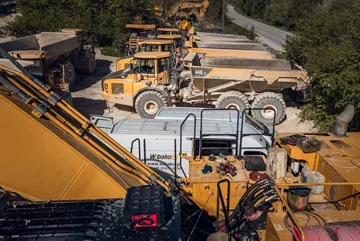Hydraulic valves in construction machinery
The hydraulic system of a construction machine consists of many elements that together are responsible for the efficiency and performance of power hydraulics. A particularly important role in this system is played by hydraulic valves.
In our guide, they will be briefly characterized, indicating their division and explaining what their tasks are in the hydraulic system. We also suggest you familiarize yourself with other articles discussing the topics of such power hydraulics elements as: hydraulic motors, actuators, filters or hydraulic pumps.
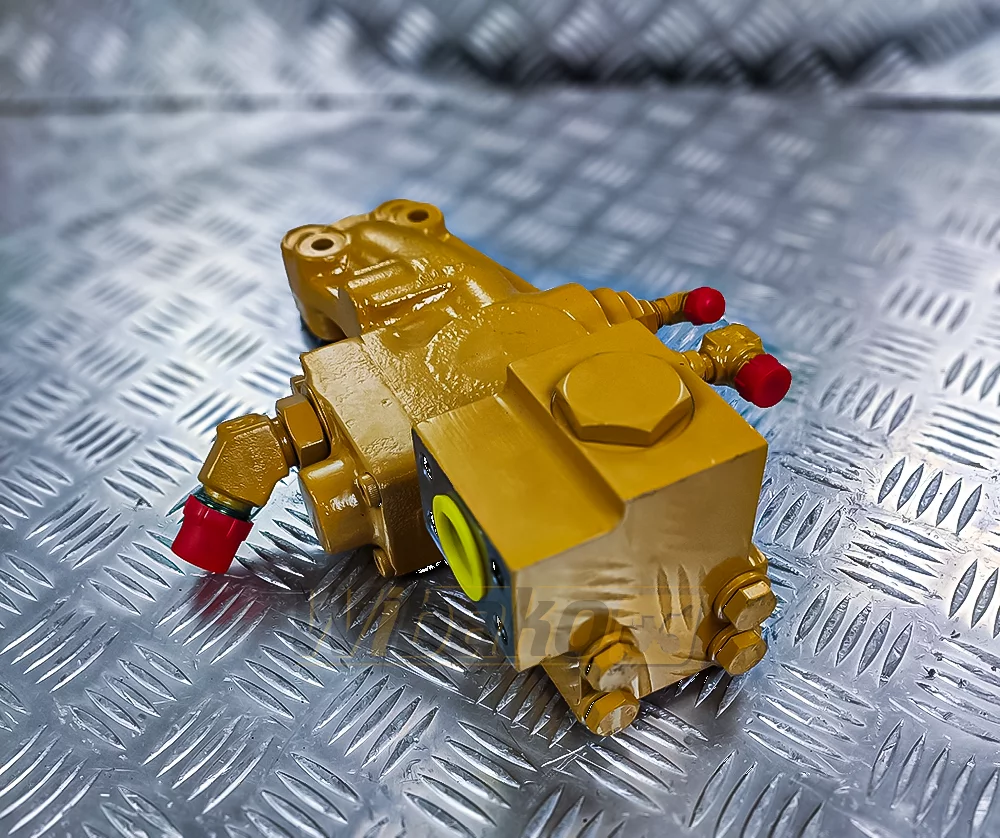
Three groups of valves
The basic division of hydraulic valves refers to the functions they perform in the power hydraulic system. We distinguish here 3 types of hydraulic valves, namely:
- Regulating the direction of flow these are distributors and shut-off valves.
- Pressure regulating, i.e. so-called maximum, reduction, switching and pressure regulating valves.
- Flow intensity regulating these are throttle valves, flow regulators and flow dividers.
Maximum valves, which are part of the group of pressure regulating valves, are further divided into safety valves and overflow valves. As for hydraulic valves, the principle of operation of the first of the mentioned groups is based on limiting the value of the fluid and thus controlling the pressure prevailing in the hydraulic system, and additionally their task is also protection of individual elements of the system from destruction. In every hydraulic system, there must be at least one safety valve.
As you can easily see, this type of device works similarly to a hydraulic relief valve. However, the difference between them is very significant: relief models do not have approvals that would allow them to operate in safety systems subject to technical supervision.
A hydraulic relief valve is therefore not suitable for protecting a boiler or pipeline, and will find its application in rather less demanding installations.
The task of the overflow valve is to control the pressure in the fluid supply pipe. When there is too much of this fluid, the valve lets its excess into the tank.
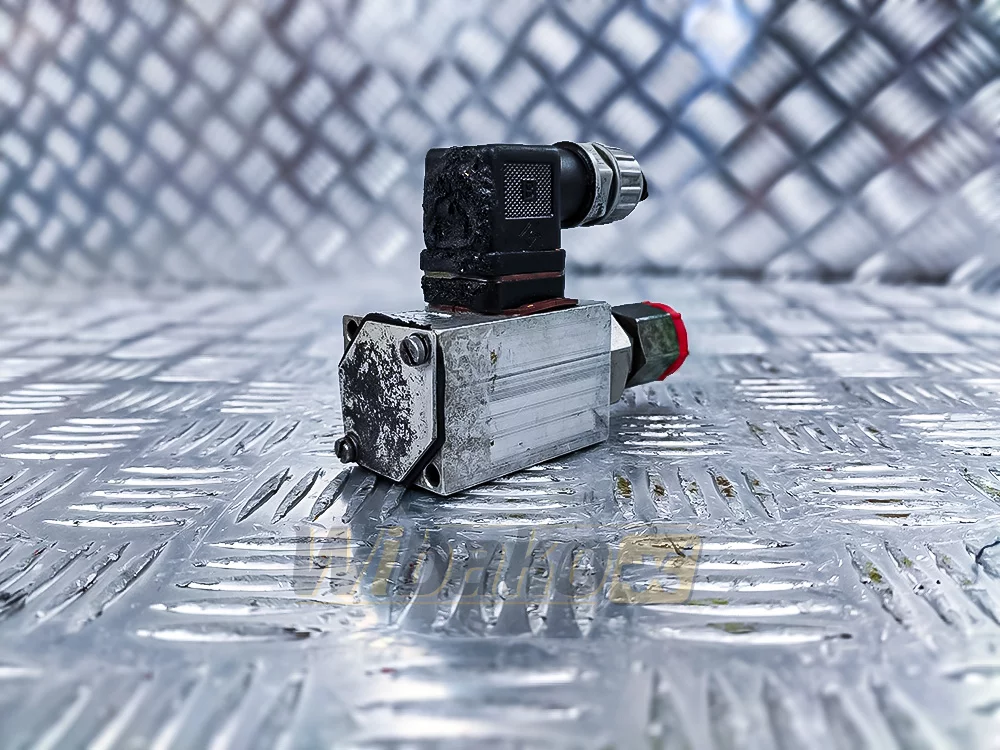
Hydraulic relief valve and spool valve
Two types of hydraulic valves are also important. The first of these is the relief model. It is sometimes called dump or surplus. The hydraulic relief valve regulates the pressure level by discharging the excess working agent in pressure installations.
The construction of a hydraulic valve has one important element: a spring. It is responsible for regulation. It is worth remembering that the hydraulic relief valve should be mounted with the cap upwards.
The spool model is an excellent complement to filtering devices. The construction of the hydraulic valve has been adapted to 3/2 in valves and allows for linear assembly in the installation. As for this type of hydraulic valves, the operating principles are simple: just screw them in at the collection points to vent the filter itself, not the entire installation. Then the condensate drain opens, which redirects the condensate to the connected separator. A properly functioning spool valve carries out the entire process in just a few seconds.
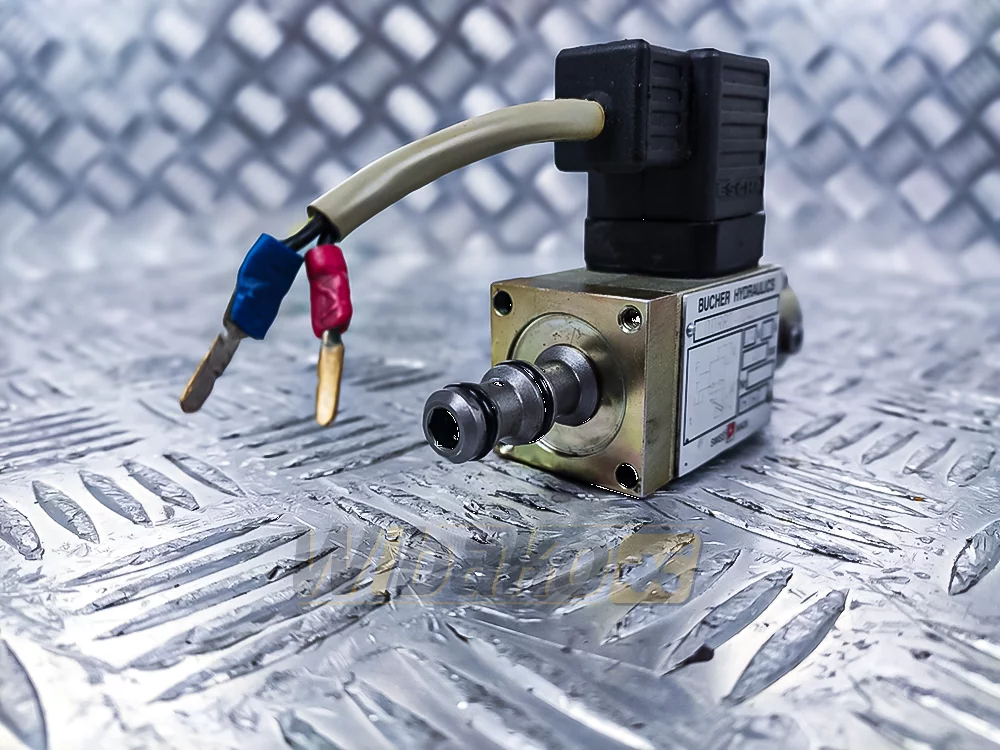
Check valves - what role do they play in the hydraulic system?
Check valves are divided into unidirectional (allow fluid to flow in only one direction, flow in the opposite direction is impossible) and controlled (allow fluid to flow in both directions - single or double valves are used in the system).
The construction of a hydraulic check valve allows several types to be distinguished: mushroom, ball, diaphragm and flap. Sometimes a distinction is also made between valves with and without load.
It is worth mentioning here that every hydraulic system must be equipped with a check valve. Otherwise, there can be no talk of fluid flow.
Function of flow control valves
Control valves are responsible for maintaining the set value of the working fluid stream supplied to the receiver. Due to the construction of hydraulic control valves we can find on the market shut-off valves and throttle valves (called throttles), which regulate the level of fluid flow.
Regulators perform a similar function to throttle valves. Their task is to maintain a constant speed of movement of receivers, regardless of various disturbances. Regulators are divided into two-way (also called through) and three-way (relief).
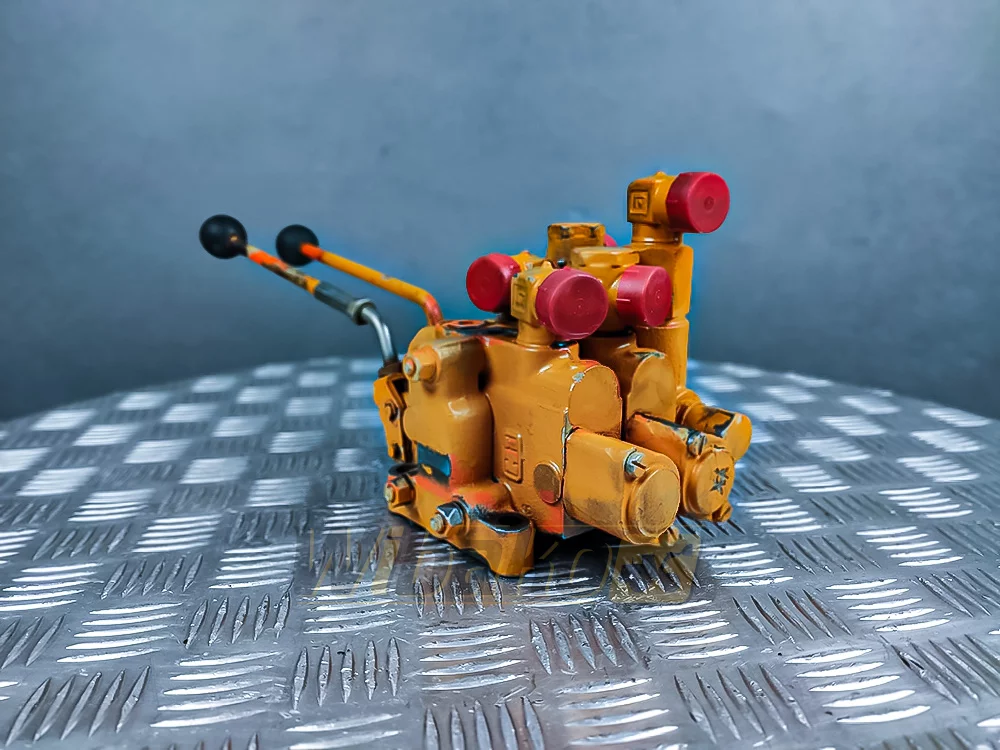
Distributor, i.e. directional valve
The task of distributors is to direct hydraulic oil to a specific place in the system or subassembly. Thus, this element relieves the hydraulic pump when necessary. More about the distributor can be read in a specially dedicated article on our blog.
In practice, there is no power hydraulic system without a distributor, and it is worth knowing that this element is very intensively exploited, it works continuously, which of course promotes failure.
The most common faults are wear or damage to the slider.
Distributors used in construction machinery are divided according to their construction and we distinguish among them:
- spool distributors
- valve distributors
- rotary distributors
It is worth adding that valves can be controlled in several ways: hydraulically, electrically or mechanically.
Due to the very difficult conditions of work and its intensity, all valves used in the power hydraulic system must meet rigorous quality criteria and be characterized by high durability.
It is also important that the elements are correctly matched to the system and type of machine, and this means that it should be entrusted to specialists who have the necessary experience and knowledge. By the way, at the end we encourage you to use the help of Wibako experts, who will be happy to provide assistance in the field of diagnosis and power hydraulics service.




